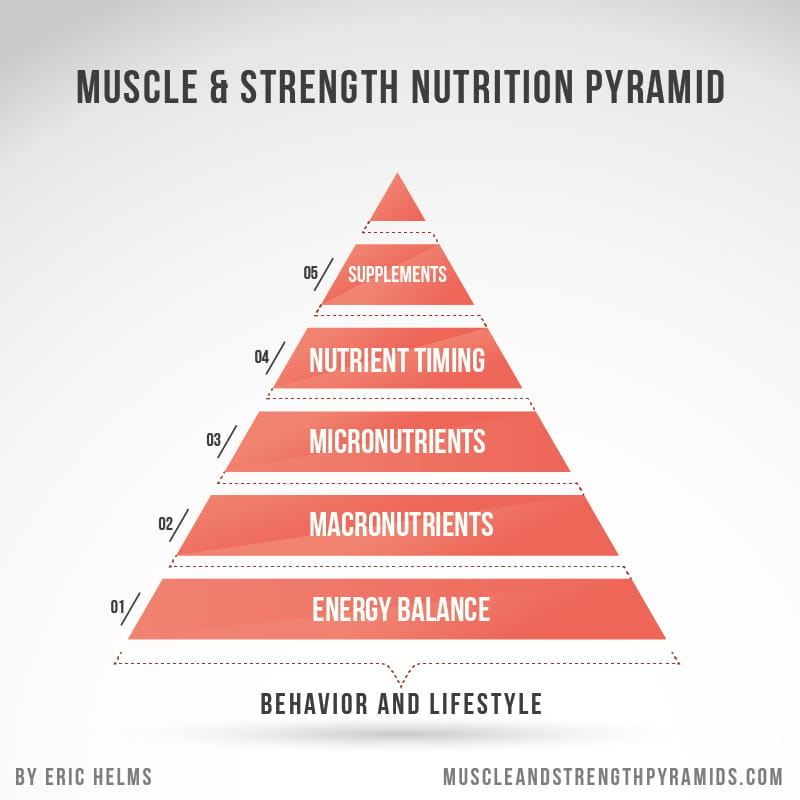- Holy Bulk
- Posts
- #5 - How Many Calories to Bulk?
#5 - How Many Calories to Bulk?
Respect the pyramid, master your calories, and bulk without excess fat.

Are you happy with your shape now? Are you lean enough?
If you can clearly see your abs, you’re on the right path. Maybe you need one more week of fat loss — that’s fine! But it’s time to start tackling the most exciting arc: Bulking.
In Holy Bulk #4, we covered the Big 3: Eat. Sleep. Move. Today, we start diving deeper — first up: nutrition.
🏛️ The Pyramid Principle
There are many factors that will influence how successful your bulk is. Think of it like a pyramid — the foundations are essential. And at the very base of that pyramid sits CICO.

Over the next few releases, we’ll climb the pyramid together — until we have a full, comprehensive nutritional system, Holy Bulk style.
⚖️ What is CICO?
CICO means Calories In, Calories Out. If you’ve ever tried to gain weight before, you’ve heard this a thousand times. The premise is simple:
Eat more than you burn → gain weight.
Eat less than you burn → lose weight.
But here’s where people go wrong: they believe CICO is the end-all, be-all of weight gain. It’s not. It must be respected — but it’s not the whole picture.
Besides the pyramid, your environment, sleep, hormones, and training all play massive roles in whether you can actually gain lean mass without piling on unwanted fat.
That is why our system is holistic.
🧰 Why Strict Controls Matter
It’s hard to track exactly how every variable behaves every day. That’s why we put strict controls in place in the previous release: The Holy Bulk Non-Negotiables.
If your sleep window is consistent, you train regularly, you hit the same step count every day, and you eat a trackable amount — you can manage your weight up or down without guessing.
If you missed the last release, here’s what we’ve locked in so far:
✅ Be in bed by 10PM — aim for 8+ hours of sleep
✅ Walk at least 10,000 steps every day
✅ Eat every 2–3 hours — never let yourself go hungry
And if something doesn’t fit? Change it. Experimenting means staying flexible while sticking to the essentials.
🗒️ How Much Food Do You Actually Need?
During the fat loss phase (like the Sugar Diet), calories were mostly ad libitum.
During the bulking phase, we must be precise:
Enough to grow
Not so much you add unnecessary fat
🔑 The Strongest Tool: NIDDK
There are thousands of online calculators — but the one I like to use is here:
👉 NIDDK Body Weight Planner
Let’s walk through it together:

Start by entering your information. Keep the calculator in guided mode.
Physical Activity Level:
Pick what’s honestly closest to your daily life.
Students:
If you mostly sit, you’re Very Light.
If you walk around campus, you’re Light.
If you add regular gym sessions, you’re Moderate.
Daily intense training? Heavy.

My own settings. I do a physical job that involves a bit of walking. During my leisure time, I walk around and go to the gym 4-5x/week.
🎯 Set Your Weight Goal
How lean did you get? For your first target, aim for roughly a 1:1 weight-to-height ratio.
If you’re 180cm tall, aim for 80–82kg.
Try to aim for 1kg gained per month — slow, steady, lean gains.
If you want to add 7kg, plan for 7–9 months
Want 15kg? Plan for 15–17 months

My goal is a 10kg weight gain. At about 1kg per month, that is 10 to 12 months. I decided to set my deadline exactly 365 days later.
🏃♂️ Factor in Activity
If you’ve been here since day one, you should already be hitting 10,000+ steps daily. If so, set your additional activity to 0%. If not, follow the tool’s suggestions and adjust your daily steps.

⚡ Confirm your Maintenance
Once you get your final numbers, here’s the kicker:
Don’t jump straight to your “bulking calories.”
If you’ve just come off a sugar fast eating, a sudden jump can wreck your digestion and add fat fast.

Instead:
1️⃣ Ramp up to your maintenance calories first (at your current weight).
2️⃣ Sit there for a bit — stabilize digestion, biofeedback, and energy.
3️⃣ Then bump up to your true bulking surplus.
Again, keep monitoring and, if needed, pause and reassess.
After a week, are you gaining weight at your calculated maintenance calories? They’re probably too high — drop by 200 kcal and check again next week. Repeat as needed until weight holds steady.
On the flip side, are you losing weight at maintenance? Then they’re likely too low — bump up by 200 kcal, monitor for a week, and adjust again if needed.
We’ve found the sweet spot when your weight stays stable — that’s your true maintenance.
📏 Keep It Tight
Remember: your calorie numbers only hold true if your lifestyle is consistent.
Same training. Same steps. Same sleep.
If your daily movement or job changes, stop and reassess.
🧩 Next Up: The Macros
Now that you know your total calories — the next question is:
How should you split your protein, carbs, and fat?
That’s exactly what we’ll cover next week. Stay dialed in.
Ready to bulk smart? Let’s get it.
— Sainté